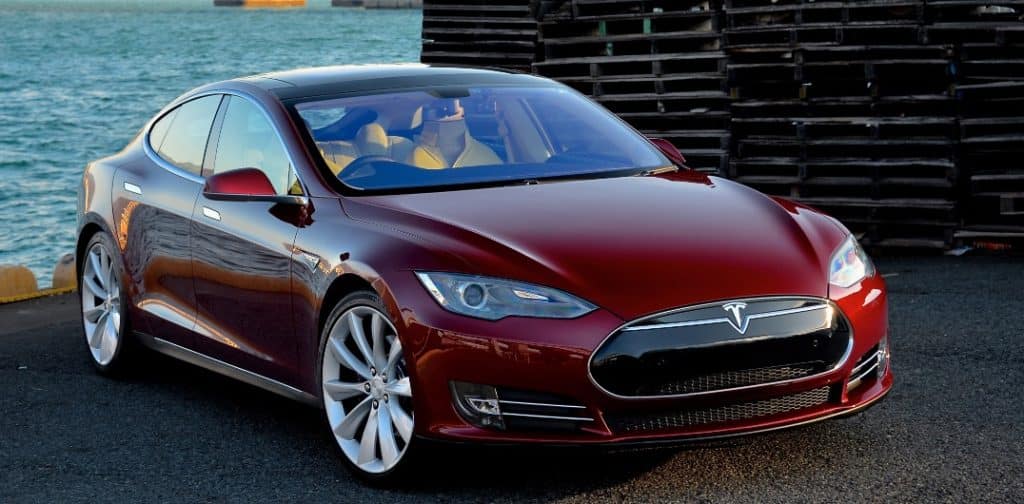Maintenance costs are cheaper for a Tesla (or any electric vehicle) than an ICE vehicle.
Overview of Tesla Model S Annual Maintenance Costs
Your Tesla Model S is an advanced electric vehicle with relatively low running costs. However, it does require regular maintenance to keep it in optimal condition.
Annual maintenance costs can vary based on driving habits, location, and the age of the vehicle.
Key factors influencing maintenance costs include:
- Tire replacement or rotation: Tires should be rotated every 10,000-12,000 miles to ensure even wear. Replacement depends on usage and driving conditions, but typically occurs every 20,000-40,000 miles.
- Brake system inspection: Since Tesla vehicles use regenerative braking, traditional brake pads and rotors experience less wear. However, an annual inspection is recommended.
- Battery maintenance: The battery is a significant component of your Model S. It’s designed to last, but over time, efficiency can decrease. Regular checks are advised to monitor battery health.
- Air conditioning service: Recommended every 2 years to maintain optimal functionality.
- HEPA filter replacement: If your Tesla Model S is equipped with a HEPA filter, replacement is recommended every 3 years.
It is important to note that Tesla’s electric motors have fewer moving parts than internal combustion engines, which typically leads to lower maintenance costs in comparison. Tesla also offers service plans that cover annual inspections and routine maintenance work which can be more cost-effective.
Typical annual maintenance costs can be summarized as:
| Maintenance Item | Approximate Cost (USD) |
|---|---|
| Tire rotation | $50 – $100 |
| Brake system inspection | $100 – $300 |
| Battery check | Free with warranty |
| Air conditioning service | $100 – $200 |
| HEPA filter replacement | $150 – $250 |
Remember to regularly check your car’s software for updates, as these can also include enhancements that improve vehicle maintenance and performance.
Detailed Breakdown of Maintenance Expenses

Maintaining your Tesla Model S involves several key expenses that you need to account for to ensure your vehicle remains in top condition.
Battery Maintenance and Replacement
The lithium-ion battery pack in your Model S is designed to last, but it will degrade over time. Costs associated with keeping the battery in good shape or replacing it after its warranty period can range from $0 to $20,000.
- Warranty: First 8 years (or 150,000 miles), whichever comes first.
- Post-Warranty: Potential replacement cost, if needed.
Tire Rotation and Replacement
Proper tire care extends their lifespan and ensures safe driving. You should rotate your tires every 6,250 miles. Tire replacement costs can vary widely depending on the brand and tire type.
- Rotation: $50 – $100 per service.
- Replacement: Approximately $200 – $350 per tire.
Brakes and Suspension
The regenerative braking system reduces wear on your brake pads, but they will eventually need service or replacement.
- Brake Pads: Every 25,000 – 50,000 miles, costing around $700.
- Suspension: Inspections recommended, with potential costs for parts and labor.
Software Updates and Electrics
Software updates are provided over-the-air at no extra cost. However, electrical components may require attention.
- Updates: Free.
- Repairs: Costs depend on the specific issue.
Bodywork and Interior Care
Maintaining the appearance of your Model S both internally and externally will protect its value.
- Car Wash and Detail: Starting at $50 per session.
- Repaint: If required, can exceed $1,000 depending on the work.
Comparison With Internal Combustion Engine Vehicles
When you evaluate the annual maintenance costs of a Tesla Model S against traditional internal combustion engine (ICE) vehicles, specific differences inherent in the technologies affect maintenance expenses.
The Tesla Model S, like most electric vehicles (EVs), has fewer moving parts than an ICE vehicle.
| Maintenance Item | Tesla Model S | ICE Vehicles |
|---|---|---|
| Oil Changes | Not required | Required |
| Engine Air Filter | Not required | Required |
| Spark Plugs | Not required | Required |
| Timing Belt | Not required | May be required |
For a Tesla Model S, oil changes, engine air filter replacements, and spark plug changes are non-existent, leading to cost savings.
Also, there’s no need for a timing belt, which can be a costly repair on ICE vehicles.
The brake wear for Tesla vehicles tends to be lower due to regenerative braking, which uses the electric motor to slow the car, effectively reducing the use of the physical brake pads.
In contrast, your typical ICE vehicle relies entirely on friction brakes, which wear out and need replacing more frequently.
| Brake System | Tesla Model S | ICE Vehicles |
|---|---|---|
| Brake Pad Replacement | Less frequent | More frequent |
However, you should consider that electric vehicles may have higher upfront costs and can incur expenses related to battery maintenance or replacement after several years, though this is not an annual cost.
Certain EV-specific components, such as the battery coolant or electric motor maintenance, can lead to expenses not found in ICE vehicles.
Tires and windshield wipers are examples of maintenance costs that you can expect to be similar between both types of vehicles:
| General Maintenance | Tesla Model S | ICE Vehicles |
|---|---|---|
| Tires | Similar | Similar |
| Windshield Wipers | Similar | Similar |
